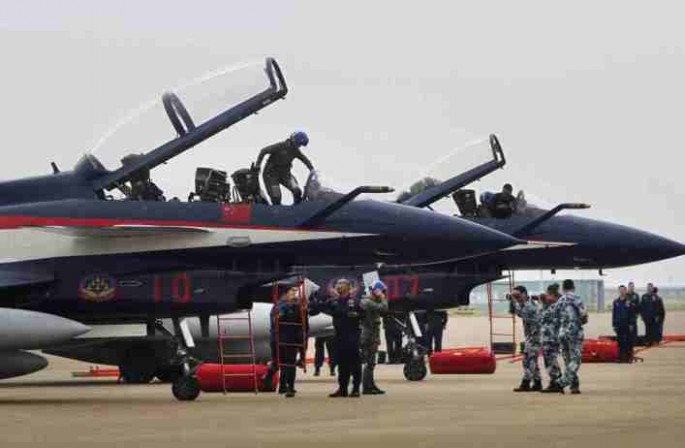China has allowed the PLA to export its domestically developed J-10 fighter jet as the country looks to attract buyers at the China National Aero-Technology Import and Export Corp. booth at the Singapore Airshow 2016, which kicked off on Tuesday, Feb .16, according to a report China Daily.
The report said that a large-scale model of the FC-20, the export version of the J-10, was on display at the six-day airshow.
Since it is an unspoken rule in China's defense sector that weapons solely designed for the People's Liberation Army are never displayed at foreign exhibitions, the model's appearance in Singapore is an indication that the country now wants to promote the warplane to the international market, the report said.
The J-10, which was designed and produced by Aviation Industry Corp. of China, is a third-generation, multirole combat aircraft. It has a canard delta wing design and a fly-by-wire flight control system. Military experts regard it as one of the best fighter jets in the world.
The plane first entered service with the PLA Air Force in 2004 as the J-10A and then it was declassified in 2009.
British think tank International Institute for Strategic Studies estimated that the PLA Air Force and PLA Navy's aviation units had at least 260 of the jets in operation as of Feb. 2014.
Various media reports said that the country has also developed at least two upgraded versions of the aircraft--the J-10B, which has started to be delivered to the PLA Air Force, and the J-10C that is in the testing stage.
Chinese military observers and their foreign counterparts have long expected about the time that the J-10's export would be approved. Foreign media named potential buyers like Pakistan, Iran and Argentina, but none have been reported to be in substantial negotiations with China so far.
In Sept. 2013, Ma Zhiping, former general manager of China National Aero-Technology Import and Export Corp., said that several foreign countries from Asia, Africa and South America had "expressed interest" in the J-10, as his company was expecting a huge market for the plane.
Wang Ya'nan, deputy editor-in-chief of Aerospace Knowledge magazine and an expert in aviation, said that selling fighter aircraft was never an easy task since arms sales were often influenced by several geopolitical factors.
"Land arms such as tanks or even short-range surface-to-surface missiles have limited impact on geopolitics, but fighter jets can perform strikes far away from their home country and thus are considered to have stronger prowess," Wang said.
"In addition, a contract for fighter jets usually means a large amount of profit because their life span is very long, so the value behind the aircraft and the after-sale services involved would be very high. Therefore, every major player in the aviation industry will spare no effort to scramble for the contract," the aviation expert added.
According to Wang, China's weakness in its selling efforts is that its fighter jets are still not proven in combat.
"Fortunately, the PLA Air Force has many air combat drills each year, which can enable foreign clients to know the capabilities of Chinese aircraft," Wang said.





















